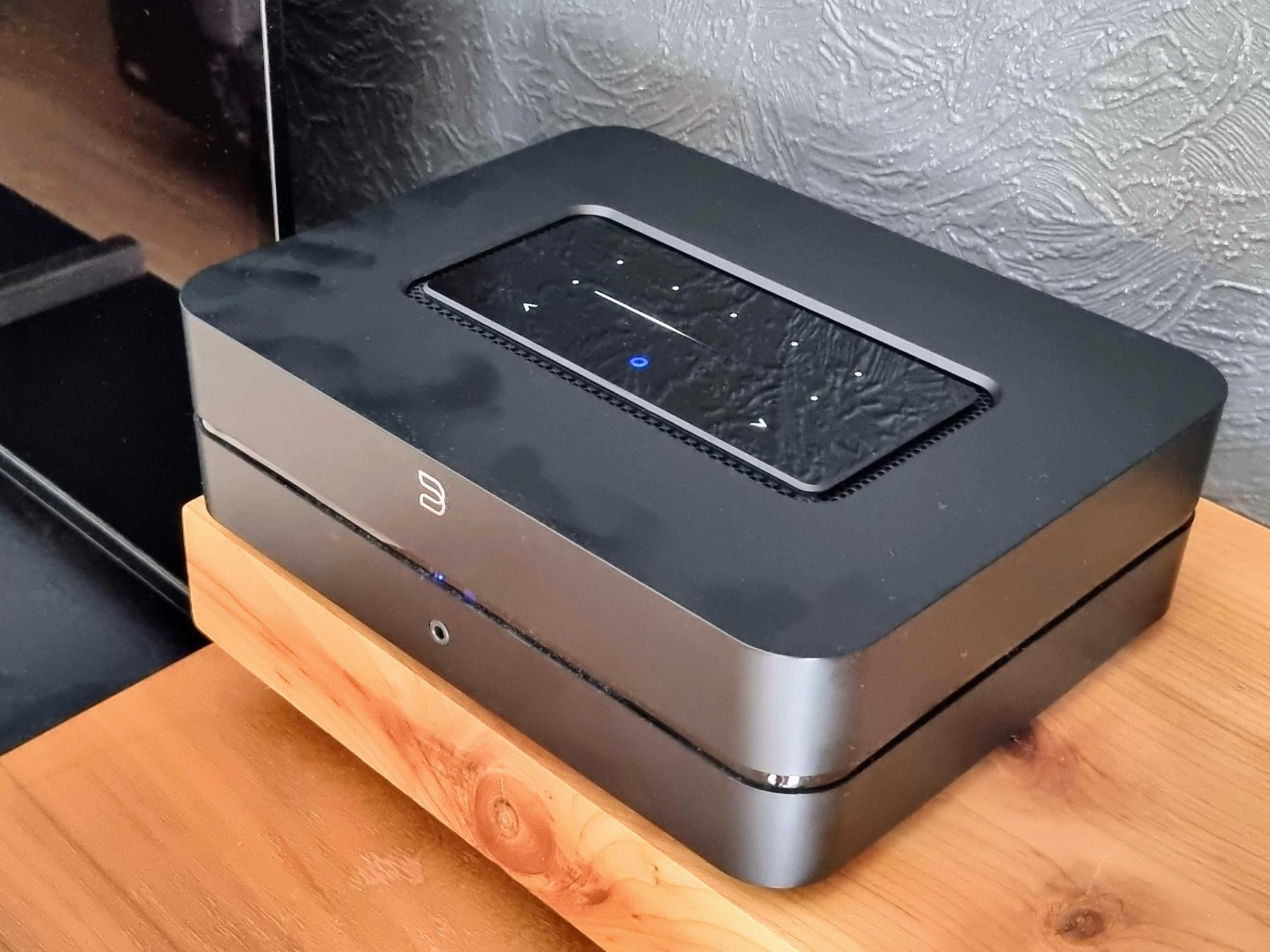My Experience with the BlueSound Powernode: Stellar Sound, Clunky Software

Janaka Samarakoon
As an audiophile with a deep love for classical music and a stubborn loyalty to Qobuz 🇫🇷, I recently added the BlueSound Powernode to my setup — pairing it with my beloved Rogers LS5/9 loudspeakers. The result? Astounding. These speakers have never sounded better.
I primarily listen to classical music — symphonies, concertos, chamber works — and the way philharmonic ensembles come to life through this setup is truly impressive. The clarity, tonal balance, and sense of space the Powernode delivers are very impressive. I can virtually identify each individual voice in the chorus of Saint Matthew’s Passion conducted by Philippe Herreweghe, even while hearing it as a single, powerful force to reckon with. And Ophélie Gaillard’s cello resonates through my Rogers with a vibrant, natural, woody tone — the very essence of this beloved instrument. I haven’t yet had time to dive into the Mahler symphonies, but I’m sure I’m going to cry when I do!
This compact, all-in-one amplifier/streamer not only breathes new life into my Rogers but also quietly put to shame the aging ATOLL preamp and amp stack I had relied on for decades. The refinement and presence it achieves are unmatched in my experience at this price point.
The Bumpy Start
However, it wasn’t all smooth sailing from the beginning. The Wi-Fi connection was a mess — constantly dropping, making it virtually unusable. The fix? Plugging the Powernode into my network via Ethernet, which resolved the issue completely. Lesson learned: when in doubt, wire it up.
Streaming Classical in High Res with Qobuz
My streaming platform of choice is Qobuz, and I use the Studio tier to enjoy music in High Resolution. Thankfully, Qobuz is integrated into the BluOS app, so I was able to link my account and stream directly to the amp. But here’s where the love story turns a bit sour.
The BluOS app, while functional, is far from user-friendly. Compared to the elegant and intuitive native Qobuz app, BluOS feels clunky and outdated. Yet, because BlueSound doesn’t currently support Qobuz Connect, I’m stuck using BluOS. That’s the trade-off — and a frustrating one.
To make matters worse, BluOS connects painfully slowly to Qobuz’s servers. I’m not exaggerating when I say that every single command takes 20 to 30 seconds to respond. The first time, I thought something had crashed. It hadn’t. It’s just that slow.
Spotify: A Different Story
Oddly enough, the experience with Spotify is seamless. Thanks to Spotify Connect, the native app communicates directly with the Powernode — no BluOS needed. Instant playback, zero latency. If you’re a Spotify user, the Powernode is an excellent choice.
But for Qobuz devotees like me, switching platforms isn’t an option. Beyond nostalgia and national pride, I also appreciate Qobuz’s ethical stance on artist royalties, its extensive classical catalog, and its rich editorial content. I’m holding out hope that Qobuz Connect will soon find its way into the BlueSound ecosystem.
The French Radio Gap
Another quirk: BluOS has no partnership with Radio France, which means French public radio stations are nowhere to be found. As an Android user, I can’t even AirPlay them — and BluOS doesn’t support Chromecast, which is frankly disappointing. It's frustrating how many manufacturers still limit advanced features to iOS only, as if premium audio experiences were meant exclusively for Apple users.
Even Sonos, with its otherwise solid products (I own a Move 2), suffers from the same limitation — AirPlay only, no Chromecast. Again, I’m forced to rely on their native app, which is no joy to use, just to access services like Qobuz or Radio France.
I eventually found a workaround: manually pasting Radio France streaming URLs into TuneIn. It works, but I wish it weren’t necessary.
A Gorgeous TV Setup
One final win: I connected my Sony Bravia OLED TV to the Powernode using HDMI eARC. Initially, the connection failed. But after swapping the HDMI cable for a certified one, everything clicked — and suddenly, my Rogers were voicing the TV. The improvement in sound quality was stunning. Dialogues are crystal clear, and cinema nights at home have never sounded better.
Final Thoughts
The BlueSound Powernode delivers exceptional sound quality and packs impressive power in a sleek form. It’s a sonic upgrade I’d recommend to anyone looking to revive a classic speaker setup with modern features. For classical music lovers especially, the way orchestras and recordings from the great concert halls come alive is a revelation.
But it’s also held back by its underwhelming software. I don’t praise BluOS, and I can’t wait for the day when Qobuz Connect compatibility allows me to bypass it altogether. Until then, I’ll keep streaming — slowly, sometimes clumsily — but always in high fidelity.
